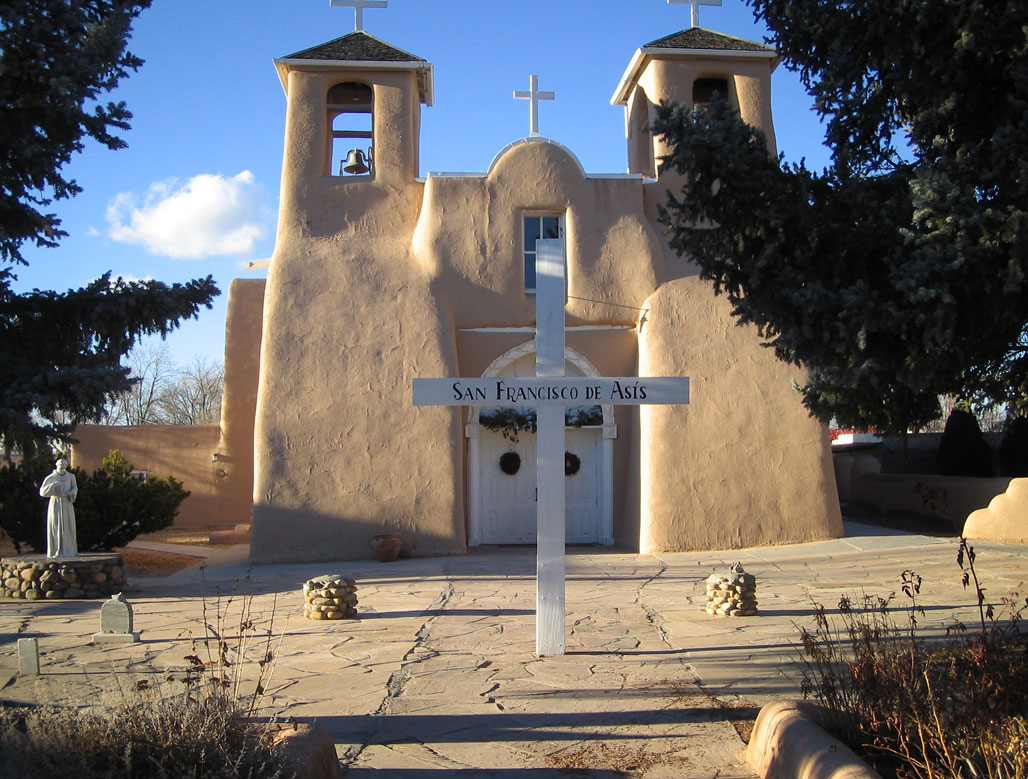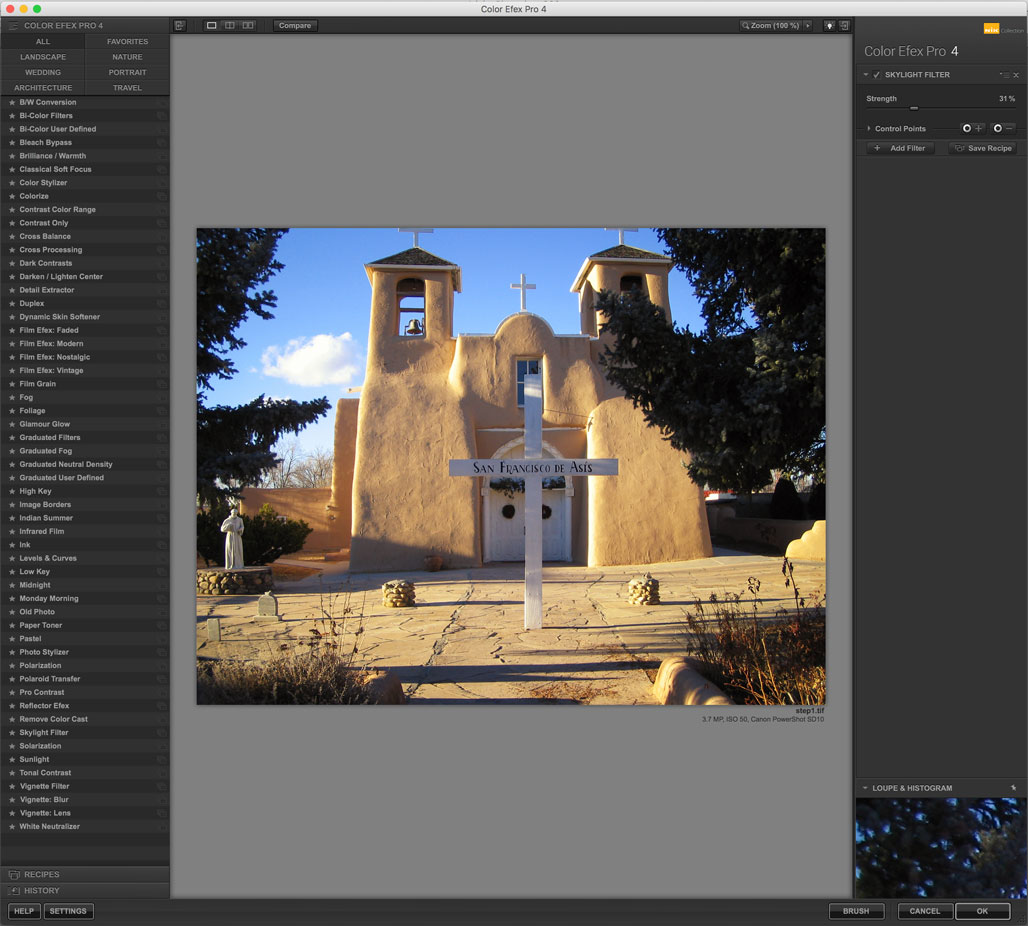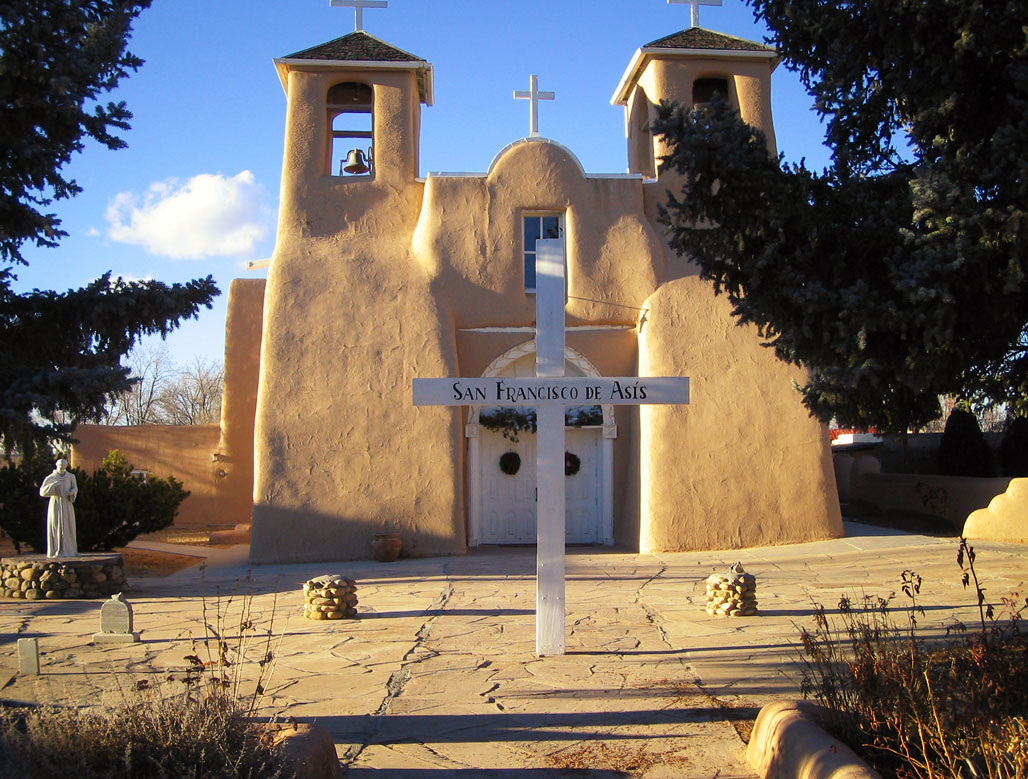Today’s Post by Joe Farace
The trick is to be grateful when your mood is high and graceful when it is low. —Richard Carlson
Because they remove the blue cast that appears particularly under the noonday sun, Skylight filters are one of the standard on-camera filters that photographers will use for for color photography. A Skylight filter typically absorbs 46% of the UV radiation and atmospheric haze appearing in a scene. These filter don’t require longer exposures—there’s no filter factor—so many photographers, including myself, use them as protection against scratches, dust, moisture, and fingerprints on the lens’s front element, although this is not a universal practice.
Here’s how I used a digital version in Color Efex:
 Step 1: San Francisco de Asis Mission Church is a historic and architecturally significant church that’s located on the main plaza of Ranchos de Taos, New Mexico. Built between 1772 and 1816, it’s considered one of the finest examples of a New Mexico Spanish Colonial mission church. It was designated a National Historic Landmark in 1970 and is a popular target for photographers including myself. At left. is the original SOOC photograph that I made with Mary’s Canon PowerShot SD10 with an exposure was 1/500 sec at f/2.8 at ISO 50.
Step 1: San Francisco de Asis Mission Church is a historic and architecturally significant church that’s located on the main plaza of Ranchos de Taos, New Mexico. Built between 1772 and 1816, it’s considered one of the finest examples of a New Mexico Spanish Colonial mission church. It was designated a National Historic Landmark in 1970 and is a popular target for photographers including myself. At left. is the original SOOC photograph that I made with Mary’s Canon PowerShot SD10 with an exposure was 1/500 sec at f/2.8 at ISO 50.
 Step 2: The digital Skylight Filter that’s part of Color Efex combines the effects of a conventional Skylight Filter and removes ultraviolet radiation, which can introduce blue colors in the image, along with the effect of a warming filter. When applied to an image, this filter can be used to either warm an image or remove blue color cast that sometimes occur in outdoor photographs. The interface for the filter (at right) is simple and consists of one control. The strength slider controls the amount of the filter effect that can be applied to the image. Just slide to it to produce the effect you like.
Step 2: The digital Skylight Filter that’s part of Color Efex combines the effects of a conventional Skylight Filter and removes ultraviolet radiation, which can introduce blue colors in the image, along with the effect of a warming filter. When applied to an image, this filter can be used to either warm an image or remove blue color cast that sometimes occur in outdoor photographs. The interface for the filter (at right) is simple and consists of one control. The strength slider controls the amount of the filter effect that can be applied to the image. Just slide to it to produce the effect you like.
Step 3: Although though the photograph was made late in the day, I didn’t feel that the original JPEG file captured the right mood. Instead of simply adding red-orange to the image or isolating and removing unwanted blue colors, the Skylight Filter was used to warm all of the colors in the image in ways that produces a pleasing but natural looking effect.
